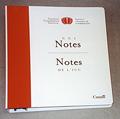The care of each item in a collection is affected by the building, the environment, and the people in an institution. Careful planning and foresight during museum construction or expansion will greatly decrease later costs for environmental retrofits or conservation treatments. Understanding factors of deterioration by all museum or library staff becomes a cost benefit that should not be ignored. Not only are irreplaceable items preserved, but the general operating budget for the facility may be significantly reduced without damaging the collection. Also, it may be possible to avoid expensive improvements by using less expensive alternatives that are just as effective. Often staff dedication can greatly reduce damage from imperfect environments, too. This section covers general preservation principles, new and expanded facilities, the environment and how it is monitored, artifact labeling, storage, exhibits, transport and staff handling procedures: all factors that affect the life of an artifact.
Books and products we recommend:

Vol.1 No.1
Long Range Preservation Planning
| $5.00 |
 Preventive Conservation in Museums: Video Handbook compliments the 19-video series on preventive conservation. Each chapter is the script of one of the videos. Subjects include an introduction to preventive conservation, storage, the condition report, relative humidity and temperature, the care of textiles, protecting objects on exhibit, emergency and disaster planning, and closing a seasonal museum.
Preventive Conservation in Museums: Video Handbook compliments the 19-video series on preventive conservation. Each chapter is the script of one of the videos. Subjects include an introduction to preventive conservation, storage, the condition report, relative humidity and temperature, the care of textiles, protecting objects on exhibit, emergency and disaster planning, and closing a seasonal museum.
| Preventive Conservation in Museums Handbook | $35.00 |
 Framework for the Preservation of Museum Collections Wall Chart outlines various methods that can be used to avoid or control potential deterioration of museum objects. The rows list nine agents of deterioration (direct physical forces: thieves, vandals, displacers; fire; water; pests; contaminants; radiation; incorrect temperature and incorrect relative humidity), while the columns present three different levels at which the agent deterioration can be controlled. The procedures column outlines actions that can be taken. English/Spanish.
Framework for the Preservation of Museum Collections Wall Chart outlines various methods that can be used to avoid or control potential deterioration of museum objects. The rows list nine agents of deterioration (direct physical forces: thieves, vandals, displacers; fire; water; pests; contaminants; radiation; incorrect temperature and incorrect relative humidity), while the columns present three different levels at which the agent deterioration can be controlled. The procedures column outlines actions that can be taken. English/Spanish.
|
Preservation of Museum Collections Wall Chart | $29.00 |
Links to related information on other sites:
 CCI Notes is the most important collection care publication a museum can purchase. A collection of over 90 technical leaflets written for a broad audience, topics in this continually expanding series range from "Removing Mould from Leather" to "Storage for Costume Accessories" and "Indoor Display of Industrial Collections." CCI Notes are illustrated, include supplier lists and a thorough bibliography. Note: this publication is not a compilation of the CCI technical bulletins. CCI Notes is no longer for sale but is available online at the CCI website.
CCI Notes is the most important collection care publication a museum can purchase. A collection of over 90 technical leaflets written for a broad audience, topics in this continually expanding series range from "Removing Mould from Leather" to "Storage for Costume Accessories" and "Indoor Display of Industrial Collections." CCI Notes are illustrated, include supplier lists and a thorough bibliography. Note: this publication is not a compilation of the CCI technical bulletins. CCI Notes is no longer for sale but is available online at the CCI website.
| CCI Notes is no longer for sale but is available online at the CCI website. |
|
Care for my Collection
http://www.collectionslink.org.uk/collections_care
"Use the Net to find preservation resources" by Eric Swanson
/ pubs/v1n2p2.html
"Developing a relationship with local reporters will help the museum in future contacts" by Tim Huber
/ pubs/v2n2p4.html
Conservation Treatment Labels "…and everything old is new again."
http://palimpsest.stanford.edu/ waac/wn/wn19/wn19-1/wn19-103.html
IS COLLECTION MANAGEMENT AN "ART" OR A "SCIENCE"? (DISCUSSED WITH REFERENCE TO RECENT STANDARDS SETTING INITIATIVES IN THE UNITED KINGDOM)
http://palimpsest.stanford.edu/jcms/ issue1/raikes.html
Sources for Preservation Information
http://www.sos.mo.gov/archives/localrecs/conservation/notes/sources.asp
